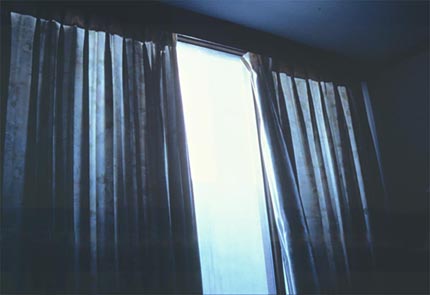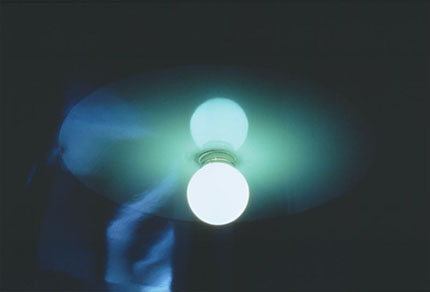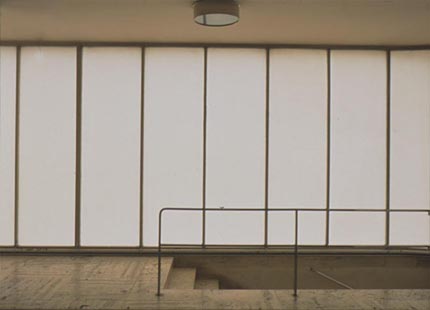LUISA LAMBRI
PEOPLEText: Ilaria Ventriglia
“Architecture is a pretext to move something else. Today what interests me is the specific moment when a place is transformed into a space”.

Assembly Hall, Chandigahr, Le Corbusier, 1950. Photo: Luisa Lambri
Luisa Lambri photographs architecture, her pictures stem from a personal relationship with the great modern buildings. Behind her is the vast tradition of the documentary, but this is far from what Luisa is seeking – the immaterial nature of space. Le Corbusier built an entire city at Chandigarh, in India; he attempted the ambitious dream of transporting western architecture to a place where the only architecture possible are the individuals; people are the foundations of palaces, the soul of India. In Chandigarh Luisa chose an undefined, strictly uninhabited view, no geographical reference, no time reference, not night or day; she makes a mental place real and frees Chandigarh.

Turun Sanomat – Headquarters, Turku, Alvar Alto, 1927-29. Photo: Luisa Lambri
“My work does not speak about me. I try to keep a distance, to find a balance between the objective and personal visions of things”.
There is a strong social tension in the most recent contemporary research, a humanistic drive that tends to recover the subject and its reflective dimension in every possible way. Even in uninhabited space, even with silences and absences, Luisa Lambri’s work also speaks of the human but uses an abstract vocabulary to do so: secondary details, glimpses, lateral views, escape lines, windows, doors, corners and lamps. Alvar Aalto tried to reconcile the tradition of the place with architectural functionality – a living culture that seems human, but that again moves to a basically abstract tune.

Villa Tugendhat, Brno, Ludwing Mies van der Rhoe, 1928-30. Photo: Luisa Lambri
“Architecture and space have a social impact, but I am more interested in sensuality and sentimentalism; architecture speaks to me through personal involvement”.
Luisa Lambri uses her camera like a diviner’s rod; it vibrates when she senses a soul or a remembered emotion. Like a heroin from times gone by, she enters the houses of the great fathers of rationalism and rigorously, coldly and almost without emotion changes their reason to be. She writes in light what architecture cannot write on the ground, sentimental documentaries and fragments of personal stories.
As for Mies van der Rohe, the interior and exterior of the spaces interpenetrate; but for Luisa this dissolving lends itself to the imagination. She starts from the reality of things seeking an emotion and encounters herself in the void reinventing the spaces.
Read more ...




